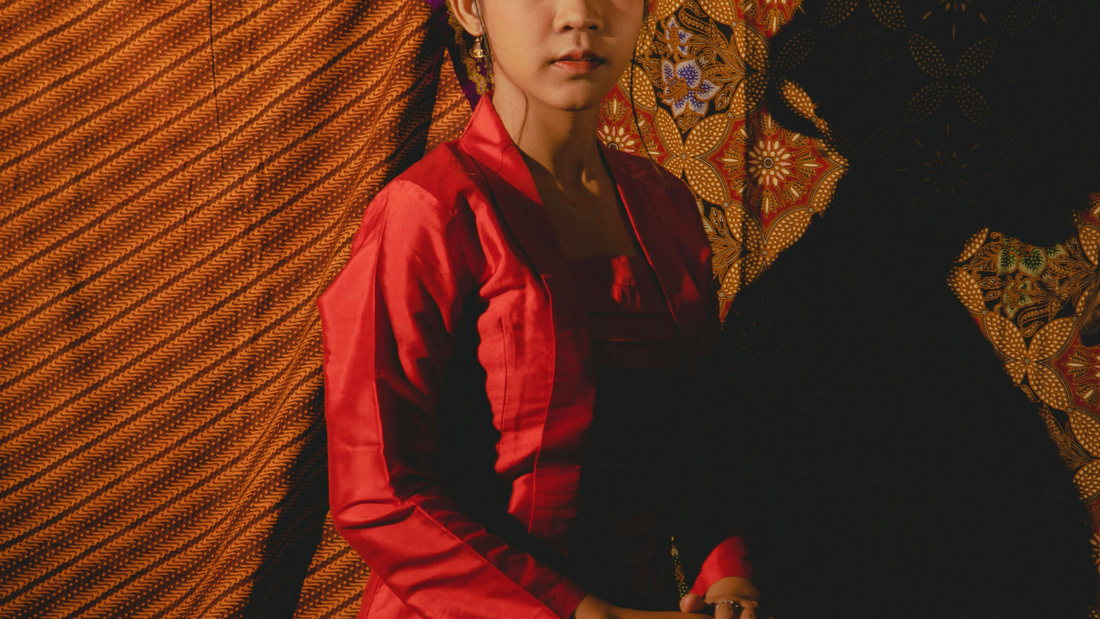To many, a sarong might seem like a simple piece of cloth. But in Indonesia, it’s a deeply symbolic garment, especially when made from batik. Across Java, Bali, and Sumatra, the sarong is worn in traditional ways that reflect local identity, ceremony, and philosophy. Each region brings its own meaning, method, and materials to how this timeless textile is styled.
Java: Pleated Precision with Meaning
In Central Java, sarongs are called jarik and are often made from batik cloth. Both men and women wear them using the wiron technique, folding the fabric into narrow front pleats, usually in odd numbers like three, five, or seven, believed to bring balance and spiritual harmony.
Women wrap the jarik snugly around the hips, paired with a kebaya blouse, while men wear it more loosely, often sewn into a tube for comfort. For ceremonies, it’s worn with formal attire such as a beskap (jacket) or batik shirt, sometimes with a blangkon (traditional headcloth). In Yogyakarta, the batik border motif is displayed proudly at the front; in Solo, it’s typically hidden to show humility.
Bali: Layers That Reflect Spiritual Order
In Bali, sarongs are essential in religious and ceremonial dress, where every layer and wrapping direction carries symbolic meaning. Both men and women wear a base layer called kamen, but they wrap it in opposite directions—men from left to right, symbolizing order (dharma), and women from right to left, aligned with feminine energy (wesi).
Men add a second outer cloth called saput, plus a selendang (waist sash) and an udeng headcloth. Women, in contrast, do not wear the saput. Instead, they complete the outfit with a kebaya, a lace or brocade blouse, and a selendang tied around the waist. This careful styling reflects the cosmic balance between masculine and feminine principles in Balinese Hindu philosophy.
Sumatra: Textiles with Deep Cultural Identity
Sumatran sarongs may not follow complex folding rules, but they carry deep cultural value through the textiles and garments paired with them. In West Sumatra, the Minangkabau people wear sarongs made from batik tanah liek, dyed with clay and filled with symbolic patterns. Women wear them with long-sleeved blouses like the baju kurung or baju kebaya, and often drape a selendang or shawl during ceremonies. Men typically pair their sarong with a long-sleeved shirt and a folded headcloth called a deta.
In North Sumatra, the Batak people wear sarongs alongside the ulos, a woven ceremonial cloth draped over the shoulder or tied around the body during weddings, funerals, or ancestral rites. Here, the focus lies not on how the cloth is wrapped, but on the meaning embedded in the patterns, colors, and traditions passed down through generations.
A Cloth of Identity and Story
From Java’s structured pleats to Bali’s symbolic layers and Sumatra’s richly woven heritage, the sarong is far more than a garment. It is art, spirituality and culture wrapped in every thread. Whether rooted in tradition or reimagined for today, batik continues to express identity, artistry, and connection to culture. Discover Batik Wayang’s range of handcrafted batik, each piece thoughtfully made to carry the stories of Indonesia forward.

